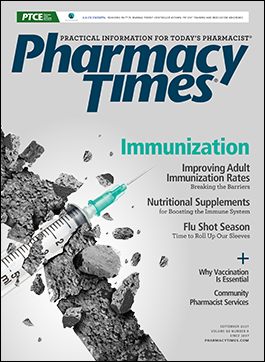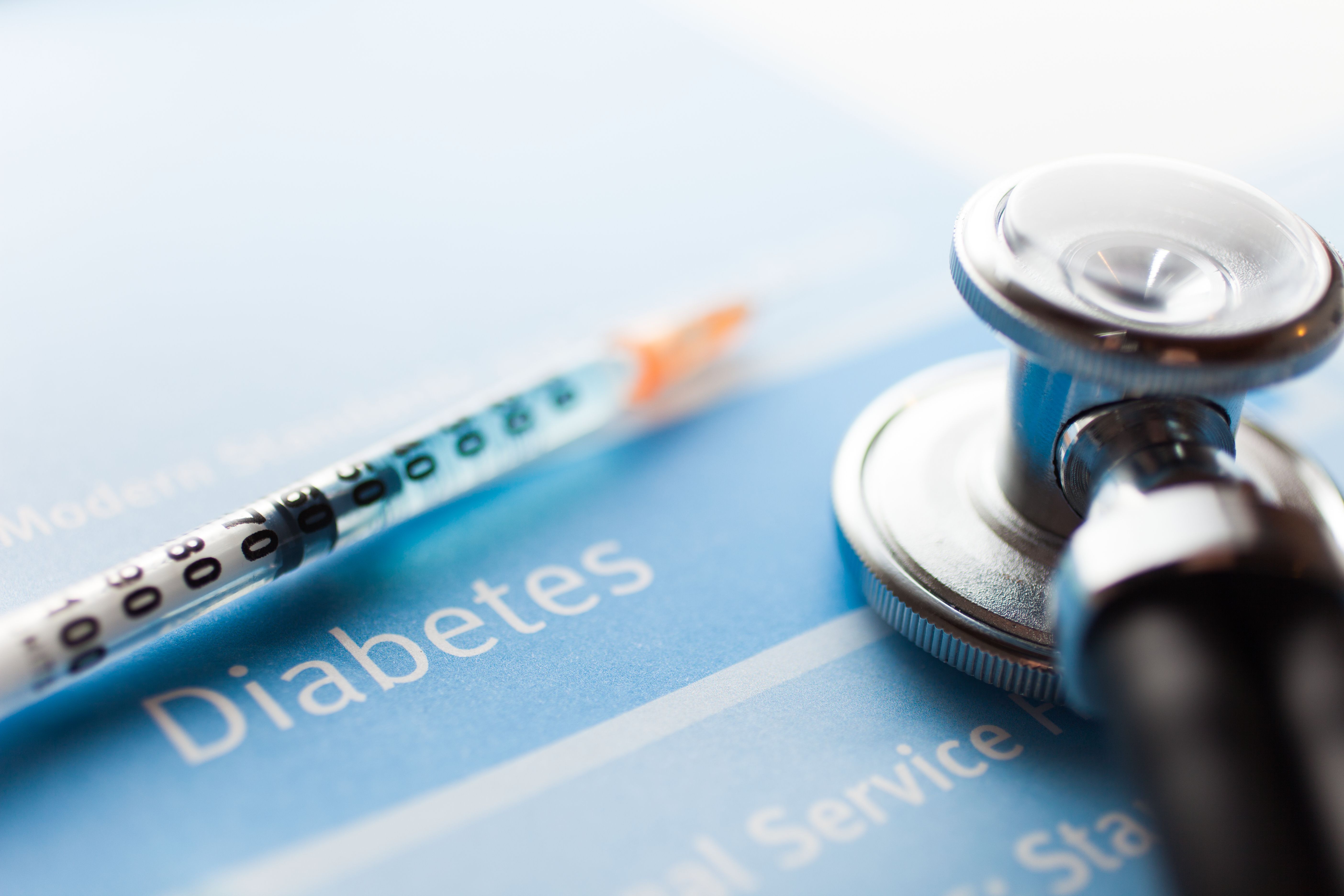Publication
Article
Pharmacy Times
Tamoxifen: New Developments
The debate about the extent to which CYP2D6 activity affects tamoxifen efficacy in patients with breast cancer continues.
The debate about the extent to which CYP2D6 activity affects tamoxifen efficacy in patients with breast cancer continues, but the plot has thickened considerably since we last discussed this issue on these pages in March 2009. Since then, research papers have continued to appear on both sides of the issue, some suggesting that reduced CYP2D6 activity due to genetics or CYP2D6-inhibiting drugs reduces tamoxifen efficacy, leading to earlier breast cancer relapse and reduced survival, and others failing to find any effect. We also have more evidence that drug interactions involving other tamoxifen metabolic pathways and adenosine triphosphate—binding cassette transporters may also affect tamoxifen efficacy.
CYP2D6 Inhibitors
CYP2D6 is the most important enzyme in the metabolism of tamoxifen to its primary active metabolite (endoxifen), so it is biologically plausible that the concurrent use of moderate to strong CYP2D6 inhibitors with tamoxifen would inhibit its anticancer effects. Two epidemiological studies published in the past year failed to find any effect of CYP2D6 inhibitors on tamoxifen efficacy,1,2 but it seems unwise to use these results to conclude that we can ignore CYP2D6 inhibitors in patients receiving tamoxifen for the following reasons:
- Other epidemiological studies did in fact find reduced tamoxifen efficacy with CYP2D6 inhibitors,3-5 so we have evidence on both sides.
- The negative studies had 1 or more significant limitations including a short follow-up, using total mortality instead of cancer mortality, inadequate adjustment for other CYP2D6 inhibitors, and other limitations.
- Epidemiological studies of tamoxifen efficacy are particularly difficult to conduct because of the long period of follow-up required, the many other causes of the outcome (treatment failure), complex CYP2D6 polymorphisms, multiple metabolic pathways for tamoxifen, inability to assess nonadherence, pre- versus postmenopausal patients, lack of tamoxifen dose information, and lack of information on concurrent OTC or herbal medications.6
Other Enzymes and Transporters
There is growing evidence that tamoxifen and endoxifen are substrates for P-glycoprotein,7 which might reduce tamoxifen bioavailability and increase endoxifen efflux from cancer cells. Theoretically, then, patients with higher P-glycoprotein activity due to genetics or drug therapy would have impaired tamoxifen efficacy. Preliminary evidence supports this hypothesis. In 1 study, the median time to develop recurrence and metastasis was just 12 months in breast cancer patients with decreased CYP2D6 activity and high P-glycoprotein activity, compared with 48 months in patients with either decreased CYP2D6 or high P-glycoprotein activity alone.8 So it may be that decreased CYP2D6 activity and increased P-glycoprotein activity can work in concert to impair tamoxifen efficacy.
Enzyme inducers may also be a problem in patients on tamoxifen. In a prospective study, breast cancer patients on tamoxifen were given rifampin 600 mg/day for 15 days.9 Endoxifen area under the concentration time curve decreased by about 70% after rifampin, leading the researchers to stop the study prematurely to avoid patient harm. The mechanisms for the large reductions in endoxifen concentrations following rifampin are not known and may involve more than one pathway. Rifampin is known to induce CYP3A4, CYP2C9, CYP2C19, glucuronidation, and P-glycoprotein, all of which are known to be involved in the disposition of tamoxifen or its metabolites.10 Until data are available, one should assume that other enzyme inducers can also reduce endoxifen concentrations.
Table 1: CYP2D6 Inhibitors
Abiraterone
Amiodarone
Bupropion
Celecoxib
Chloroquine
Chlorpheniramine
Chlorpromazine
Cinacalcet
Clobazam
Cobicistat
Darifenacin
Diphenhydramine
Dronedarone
Eliglustat
Fluoxetine
Goldenseal
Halofantrine
Haloperidol Hydroxychloroquine
Lorcaserin
Lumefantrine
Mirabegron
Moclobemide
Panobinostat
Paroxetine
Perphenazine
Promethazine
Propafenone
Quinacrine
Quinidine
Quinine
Ritonavir
Rolapitant
Terbinafine
Thioridazine
End Note
We can’t ignore that there is simply too much information suggesting that drug interactions can reduce tamoxifen efficacy. If we commit a type I error and assume that the interactions are important when they are not, we have taken only a little extra time to avoid certain concurrent medications. If we commit a type II error and assume that there is no interaction when there is, women with breast cancer will have an increased risk of cancer recurrence and death. The choice seems clear and leads to the following recommendations for patients on tamoxifen:
- Avoid concurrent use of moderate to strong CYP2D6 inhibitors (Table 1).
- Avoid enzyme inducers (Table 2).
- Counsel patients on tamoxifen to avoid OTC or herbal drugs that may inhibit CYP2D6 (goldenseal) or induce enzymes (St John’s wort).
Table 2: Enzyme Inducers
Armodafinil
Barbiturates
Bexarotene
Bosentan
Carbamazepine
Dabrafenib
Dexamethasone
Efavirenz
Enzalutamide
Eslicarbazepine
Etravirine
Fosphenytoin
Griseofulvin
Lumacaftor
Mitotane
Modafinil
Nevirapine
Oxcarbazepine
Phenytoin
Primidone
Rifabutin
Rifampin
Rifapentine
St John’s wort
Troglitazone
Vemurafenib
Vinblastine
Drs. Horn and Hansten are both professors of pharmacy at the University of Washington School of Pharmacy. For an electronic version of this article, including references, visit hanstenandhorn.com.
References
- Haque R, Shi J, Schottinger JE, et al. Tamoxifen and antidepressant drug interaction in a cohort of 16,887 breast cancer survivors. J Natl Cancer Inst. 2015;108(3). doi: 10.1093/jnci/djv337.
- Donneyong MM, Bykov, K, Bosco-Levy P, et al. Risk of mortality with concomitant use of tamoxifen and selective serotonin reuptake inhibitors: multi-database cohort study. BMJ. 2016;354:i5014. doi.org/10.1136/bmj.i5014.
- Kelly CM, Juurlink DN, Gomes T, et al. Selective serotonin reuptake inhibitors and breast cancer mortality in women receiving tamoxifen: a population based cohort study. BMJ. 2010:340:c693. doi:10.1136/bmj.c693.
- Goetz MP, Knox SK, Suman VJ, et al. The impact of cytochrome P450 2D6 metabolism in women receiving adjuvant tamoxifen. Breast Cancer Res Treat. 2007;101(1):113-121.
- Chubak J, Boles EJ, Yu O, et al. Breast cancer recurrence in relation to antidepressant use. Cancer Causes Control. 2016;27(1):125-136. doi: 10.1007/s10552-015-0689-y.
- Juurlink D. Revisiting the drug interaction between tamoxifen and SSRI antidepressants. BMJ. 2016;354:i5309. doi: 10.1136/bmj.i5309.
- Teft WA, Mansell SE, Kim RB. Endoxifen, the active metabolite of tamoxifen, is a substrate of the efflux transporter P-glycoprotein (multidrug resistance 1). Drug Metab Dispos. 2011;39(3):558-562. doi: 10.1124/dmd.110.036160.
- Teh LK, Mohamed NI, Salleh MZ, et al. The risk of recurrence in breast cancer patients treated with tamoxifen: polymorphisms of CYP2D6 and ABCB1. AAPS J. 2012;14(1):52-59. doi: 10.1208/s12248-011-9313-6.
- Binkhorst L, van Gelder T, Loos WJ, et al. Effects of CYP induction by rifampicin on tamoxifen exposure. Clin Pharmacol Ther. 2012;92(1):62-67. doi: 10.1038/clpt.2011.372.
- Powers JL, Buys SS, Fletcher D, et al. Multigene and drug interaction approach for tamoxifen metabolite patterns reveals possible involvement of CYP2C9, CYP2C19, and ABCB1. J Clin Pharmacol. 2016;56(12):1570-1581. doi: 10.1002/jcph.771.

Newsletter
Stay informed on drug updates, treatment guidelines, and pharmacy practice trends—subscribe to Pharmacy Times for weekly clinical insights.

Pharmacists Weigh Promise and Challenges of Finerenone for Patients With HFpEF





